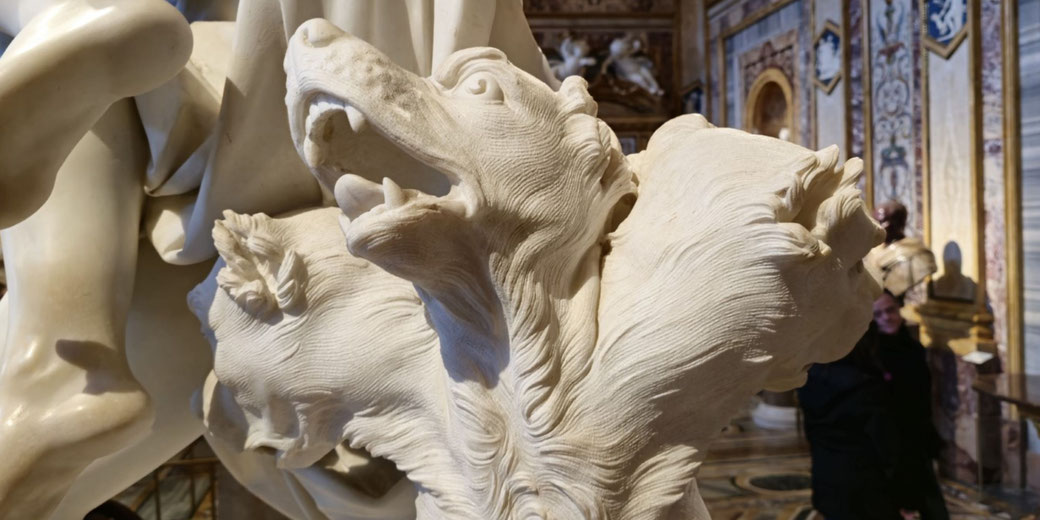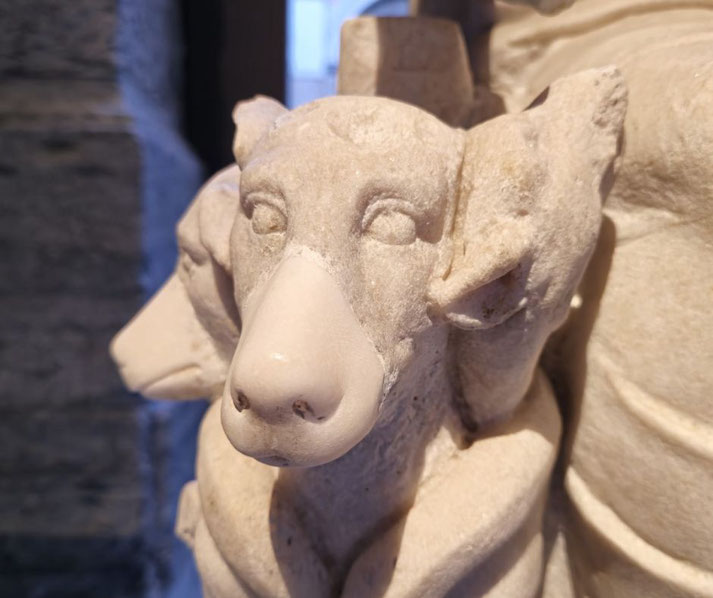Cerberus: The terrifying three-headed dog that guarded the underworld

In ancient Greek religion, people believed that when someone died, they had to cross from the ‘land of the living’ to the 'land of the dead’.
However, a fierce creature, which people called Cerberus, was thought to block the way to the afterlife. In depictions, he was shown as a dog with three heads, a snake-like tail, and a mane of snakes.
His only job was to stop the dead from leaving and the living from entering, yet if someone knew a few important secrets, they could beat the guard and go safely through the scary gates of Hades.
What did the Greeks believe about Cerberus?
He was the child of Typhon and Echidna, two powerful mythological figures often called the father and mother of all monsters.
Typhon was a giant snake-like creature, while Echidna was half woman and half snake.
As parents, they raised a group of scary creatures that frightened people across the ancient world.
Among them were the multi-headed Hydra and the Nemean Lion, as well as Cerberus himself.
Even in the earliest records, he guarded the entrance to Hades like a watchdog.
Hesiod wrote Theogony in the 8th century BCE, and in that work, he was described with fifty heads.
Later stories by Euripides and Virgil settled on the more familiar three-headed form.
The gods gave him the job of making sure that the souls of the dead stayed in their rest forever and that no living soul could go past him.
Strangely, he may have been an example of xenia, the ancient Greek idea of hospitality, though in a twisted way.
While xenia involved offering protection and kindness to guests, he offered a strict form of protection that made sure the importance of the Underworld remained clear.
This view may have been a way for the Greeks to show that death was a journey that could not be changed.
Even after Hesiod’s text, descriptions continued to show him as a large dog with three heads, each ready to bite anyone who tried to enter.
His eyes were said to glow with a threatening light, and his breath was poisonous.
In addition to his three heads, some artwork on ancient pottery and sculptures shows him with a snake-like tail and extra snakes that grew from parts of his body.
The most famous stories involving Cerberus
He appeared in several important myths of Greek mythology, one of the best-known being the final task of Hercules.
As part of his Twelve Labours, which King Eurystheus set as punishment for killing his family, Hercules had to capture him and bring him to the world of the living.
This task required Hercules to go down into the Underworld, where he met Hades, the god of the dead, and asked for permission to take him.
In a rare moment of help from the gods, Hades allowed Hercules to try on the condition that he used no weapons.
Thanks to his great strength, Hercules managed to beat him by wrestling him and pulling him up to the surface.
After finishing his task, Hercules took him back to his home without hurting him.
Another important story featuring him was the sad tale of Orpheus and Eurydice.
Orpheus was a famous musician who went down into the Underworld to get his wife, Eurydice, who had died from a snake bite.
Orpheus played a sad song on his beautiful lyre that made everyone calm, including Hades and Persephone; as a result, his music also calmed him, so that he could pass without challenge into the world of the dead.
For the Greeks, this showed the magical power of art and music to go beyond even the scariest obstacles.
Although Orpheus eventually failed to bring Eurydice back to the world of the living, this story showed that he could be beaten with the right knowledge.
Finally, Virgil composed Aeneid around 29 to 19 BCE, and in that work, he is described as a fierce guard who the Sibyl of Cumae calmed by giving him a drugged honey cake, allowing Aeneas to go safely into Hades.
Throughout Greek history, he kept his reputation as a symbol that death cannot be avoided.
Modern portrayals of him, from work like Dante’s Inferno to contemporary fantasy genres, have kept his role as a gatekeeper, showing his lasting effect on how people view death.

What do you need help with?
Download ready-to-use digital learning resources
Copyright © History Skills 2014-2025.
Contact via email
With the exception of links to external sites, some historical sources and extracts from specific publications, all content on this website is copyrighted by History Skills. This content may not be copied, republished or redistributed without written permission from the website creator. Please use the Contact page to obtain relevant permission.





